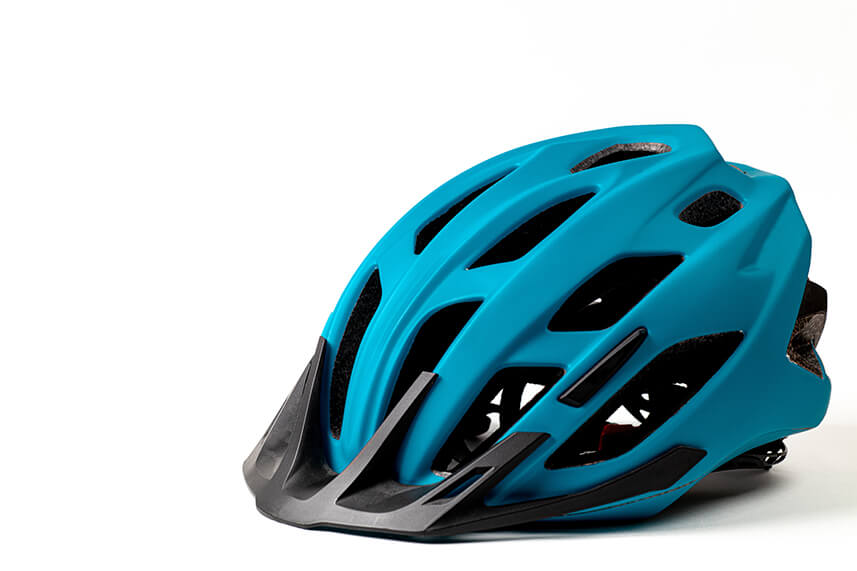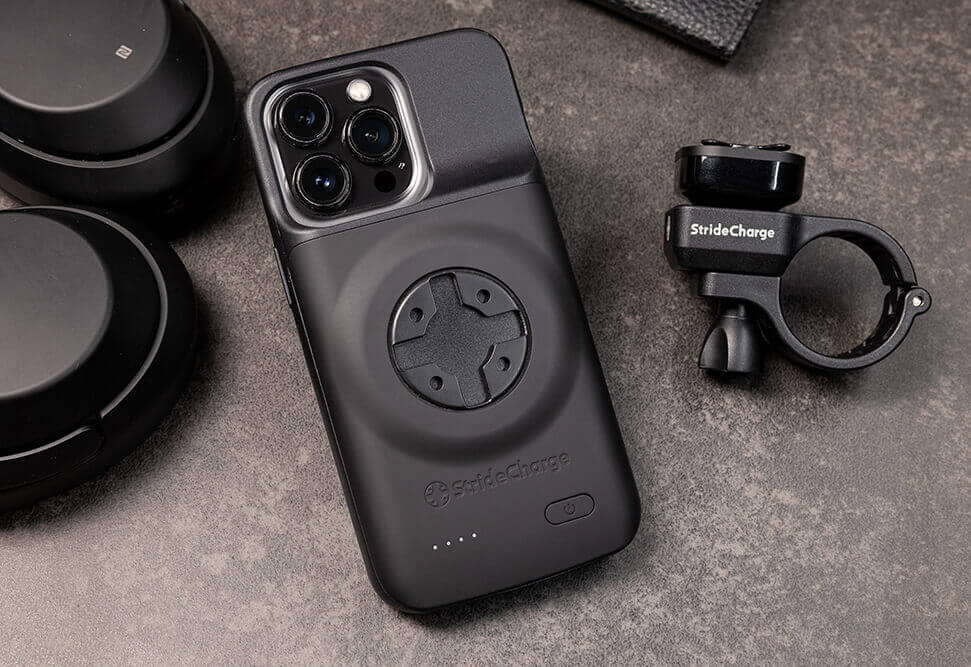In the ever-evolving world of cycling, bicycle helmets technology has made significant strides in recent years. With innovations in safety, comfort, and style, finding the perfect helmet for your needs can be a daunting task. This comprehensive guide will take you through essential features, advanced technologies, and more. So buckle up and get ready to find the perfect helmet for your next ride!
Key Takeaways
- Essential safety and comfort features to consider when choosing a helmet include certification, fit & retention system, padding ventilation & lightweight construction.
- Advanced technologies like MIPS or Koroyd offer improved performance while budget friendly options are available with proper care and replacement every 3, 5 years.
Road Bike Helmets
Road bike helmets are designed with lightweight construction and excellent ventilation in mind, making them ideal for fast-paced riding in hot weather. An aero helmet has gained popularity among road cyclists, offering a balance between aerodynamics and breathability.
A well-ventilated helmet can make a significant difference in comfort during long rides, especially in hot weather. Many helmets incorporate advanced technologies such as MIPS liners or WaveCel materials, which provide additional protection against rotational forces and impacts.
Keep in mind the style, fit, and features that align with your needs and preferences when choosing a road bike helmet.
Mountain Bike Helmets
Mountain bike helmets differ from road bike helmets in several ways, providing enhanced protection due to their larger coverage area and increased durability. These helmets cater to the specific needs of off-road riders and come in various styles and features suited for different types of mountain biking.
When it comes to most helmets, many of these incorporate advanced technologies such as MIPS or Koroyd for added protection and comfort, setting them apart from other helmets.
Consider your riding style and the specific features you require when deciding on a mountain bike helmet. Some helmets offer full-face protection for more aggressive riding, while others prioritize ventilation for cross-country or trail riding. Regardless of your preferred style, a well-fitted and protective helmet is essential for a safe and enjoyable mountain biking experience.
Casual and Commuter Helmets
Casual and commuter helmets prioritize comfort and style for everyday use, making them an excellent choice for those who cycle to work or enjoy leisurely rides around town. While these helmets may not have as many advanced features as road or mountain bike helmets, they still provide essential protection and ventilation for daily use.
Some great casual and commuter helmet style options include the Mode helmet, a skate-style design that offers protection during various activities, such as skateboarding, trail riding, and visits to the bike park. The Mode helmet features a hard plastic outer shell, MIPS liner, comfortable padding, and superior ventilation. Some cyclists even choose to wear a cycling cap underneath the helmet for added comfort and sweat management.
Keep in mind your most valued features and verify that the helmet offers sufficient protection and comfort for your needs when choosing a casual or commuter helmet.
Essential Helmet Features: Safety and Comfort

Safety and comfort should be your top priorities when choosing a helmet. Helmets sold in the US must comply with the Consumer Product Safety Commission (CPSC) certification, ensuring that the helmet remains securely fastened to the head and provides adequate protection upon impact. Additionally, helmets sold in the EU must comply with the EN 1078 European Standard.
Another important aspect to consider is the fit and retention system of a full face helmet. A well-fitted helmet with adjustable straps and a secure retention system will ensure that the helmet remains in place in the event of a crash, providing optimal protection. Look for full face helmets with full circumference headband adjustability and comfortable chinstrap designs for the best fit and comfort.
Comfort features such as padding, ventilation, and lightweight construction can make a significant difference in your overall cycling experience. A well-ventilated helmet will keep your head cool during long rides and hot weather, while comfortable padding can help prevent pressure points and discomfort.
It’s also worth considering advanced safety technologies such as MIPS, which can help reduce rotational forces in the event of an accident. MIPS technology is available in many helmet models across various price points, offering additional protection without breaking the bank.
Advanced Helmet Technologies
In recent years, advanced helmet technologies have emerged, offering additional safety features and improved performance for cyclists. One such technology is the Multi-directional Impact Protection System (MIPS), which aims to reduce the rotational forces that can occur during angled impacts. MIPS technology can be found in numerous helmet models, providing an added layer of protection for riders.
Another advanced helmet technology is WaveCel, a proprietary material developed by Bontrager and Trek. This material is designed to crumple, flex, and glide upon impact, reducing the forces transmitted to the head and providing additional protection.
Smith Koroyd, another innovative helmet technology, is composed of thermo-welded miniature tubes that resemble drinking straws. This material enhances airflow and absorbs more energy upon impact, offering improved protection and comfort for riders. Consider how these advanced technologies can enhance your safety and performance on the bike while choosing a helmet.
Budget-Friendly Helmets
Budget-friendly helmets don’t have to compromise on safety and comfort. Many cost-effective helmets on the market still meet essential safety standards such as CPSC certification and offer adjustable straps and secure fits.
Some budget-friendly helmets also incorporate advanced technologies like MIPS or Koroyd for added protection and comfort. Keep in mind the safety features, comfort elements, and any additional technologies that could improve your cycling experience when choosing a budget-friendly helmet.
Proper helmet care and replacement are essential when choosing a budget-friendly helmet. Here are some tips to follow:
- Clean your helmet regularly using a mild soap and water solution.
- Store your helmet in a cool, dry place away from direct sunlight.
- It’s recommended to replace your helmet every three to five years.
- Replace your helmet immediately after a crash or if you notice any signs of wear and tear.
Helmets for Kids and Youth

When it comes to helmets for kids and youth, proper fit and protection are paramount. Helmets like the Scamp and Woom Kids are specifically designed for children, providing a comfortable and secure fit along with essential safety features. The Scamp helmet, for example, offers:
- In-mold construction
- Polycarbonate shell over an EPS foam liner
- Excellent ventilation
- Compact design
- Roc Loc Jr. adjustment dial
- Pinch-free buckle on the chin strap
When choosing a helmet for your child, make sure to:
- Ensure the helmet meets the required safety standards
- Look for a helmet with adjustable straps for a secure fit
- Consider comfort features such as padding and ventilation to make the helmet more enjoyable for your child to wear
By following these guidelines, you can encourage your child to consistently wear their helmet and stay protected while cycling.
E-Bike Specific Helmets
E-bike specific helmets cater to the unique needs of electric bike riders, providing enhanced protection and coverage compared to traditional helmets. Helmets that meet the NTA 8776 standard, such as the Specialized Mode and Smith Dispatch, are designed to protect against higher impact speeds and cover a slightly larger portion of the head.
Consider the extra safety features and coverage offered by helmets that comply with the NTA 8776 standard when choosing an e-bike specific helmet. These helmets can offer added peace of mind and protection during your electric bike rides, ensuring you stay safe and comfortable on the road.
Helmet Care and Replacement
Maintaining your helmet’s protective capabilities necessitates proper care and replacement. Here are some tips to help you keep your helmet in good condition.
- Regularly clean your helmet with a mild soap and water solution.
- Avoid using harsh chemicals or solvents that may damage the helmet materials.
- Inspect your helmet regularly for any signs of wear and tear.
By following these tips, you can extend the life of your helmet and ensure it remains in good condition.
Store your helmet in a cool, dry place away from direct sunlight to prevent any potential degradation of the materials over time. It’s recommended to replace your helmet every three to five years or immediately after a crash, as the helmet may no longer provide adequate protection if it has sustained any damage.
When disposing of a helmet, follow local regulations and dispose of it responsibly to minimize environmental impact. By taking proper care of your helmet and replacing it when necessary, you can ensure that you’re always protected and comfortable while cycling.
Customization and Accessories
Customizing your helmet with accessories can enhance your cycling experience and add a personal touch to your protective gear. Helmet straps in various colors, customizable KED helmets, and completely custom HEXR helmets tailored to your head’s exact dimensions are just a few options available for personalizing your helmet.
In addition to aesthetic customization, various accessories can improve your helmet’s functionality. Camera mounts, lights, and replacement pads can enhance your safety and comfort while cycling. By customizing your helmet and adding accessories, you can create a unique and personalized cycling experience that caters to your specific needs and preferences.
Once you have your helmet picked out, compliment your ride with a secure phone mount and charging case, so you can keep your phone mounted to your handlebars and keep your phone within view and fully charged on your ride. Be sure to find a high quality iPhone Charge Case and Mount.
How to Properly Fit a Helmet
Ensuring your helmet fits properly is essential for optimal safety and comfort during your rides. To determine the most appropriate size for a helmet, follow these steps:
- Measure the circumference of your head.
- Select the size that is most comfortable for you.
- If you fall between sizes, opt for the one that provides the best fit.
The helmet should not be too tight or too loose on your head. The retention system should provide the right snugness for a comfortable fit. The adjustable dial at the rear of the helmet can be used to adjust the tension of the helmet’s headband, ensuring a secure and comfortable fit.
The helmet should be fitted correctly and rest low and straight on your forehead. The chinstrap should be snug but not too tight, allowing for comfortable movement while keeping the helmet securely in place. By ensuring your helmet is properly fitted, you can maximize its protective capabilities and enjoy a more comfortable cycling experience.
Summary
In conclusion, finding the perfect helmet for your cycling needs requires careful consideration of safety features, comfort, advanced technologies, and personal preferences. By understanding the various helmet options available, prioritizing proper fit, and taking care of your helmet, you can ensure a safe and enjoyable cycling experience. Whether you’re a professional racer or a casual weekend rider, investing in the right helmet is a decision that will protect you and enhance your rides for years to come.
Frequently Asked Questions
Is there a difference in bike helmets?
Road and mountain bike helmets are designed with different features to suit their respective terrain and riding position. It is essential to choose the right helmet for your type of cycling, and to wear a helmet on every ride, no matter how long or short.
Helmets are designed to protect your head in the event of a crash, and should be replaced after any significant impact. They should also be regularly inspected for signs of wear and tear.
What advanced helmet technologies are available for added protection?
Advanced helmet technologies like MIPS, WaveCel, and Koroyd offer additional protection against rotational forces and impacts, providing riders with added safety and peace of mind.
How can I ensure a proper fit for my helmet?
To ensure a proper fit for your helmet, measure the circumference of your head, adjust the retention system and make sure the helmet sits low and straight on your forehead.




Leave a comment
This site is protected by hCaptcha and the hCaptcha Privacy Policy and Terms of Service apply.